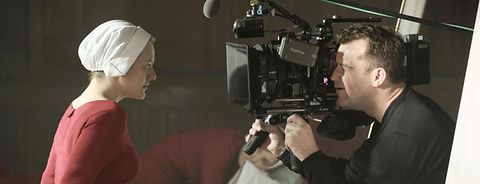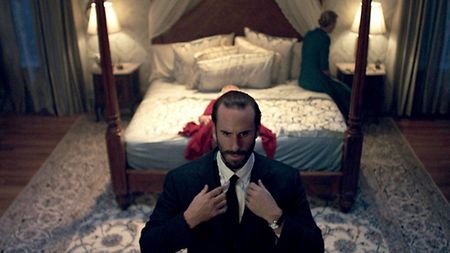Working alongside director Reed Morano ASC, a cinematographer in her own right, Colin Watkinson developed the look for a new 10-part adaptation of Margaret Atwood’s classic dystopian story, "The Handmaid´s Tale." Looking to make frequent, subtle changes to color and intensity, Watkinson turned to ARRI’s color-controllable SkyPanel and L-Series LED lights; here he explains how he used them for one particular scene.
Tell us about this scene and the general lighting requirements.
It takes place in a bedroom, where the handmaid Offred is subjected to a conception ritual called “the ceremony” by a character known as the Commander, with his wife also present. The scene is uncomfortable and unpleasant, so we had to convey that feeling. Being at night, the lighting was driven by practicals; we also decided to keep the main curtains at the windows open, with just a little bit of light and color coming through secondary net curtains to give a sense of the outside and of depth.
What fixtures did you use for those window lights?
They were SkyPanels. Initially they were directed into bounce so we could have shadows from foliage outside, but later in the season, as it got towards winter, we turned the SkyPanels straight onto the windows. They all went back to a deck, so we could easily adjust the colors and intensity levels. This is what I love about them, because I don’t like the lighting to stay the same; I like to tweak things a bit so that a room feels slightly different every time you’re in it. That’s closer to reality and it’s so much easier to achieve with LEDs.
I also had four diffused SkyPanels above the room’s beautiful curved ceiling, which I got them to make in four sections so we could pull segments out. The SkyPanels let me push light down and introduce the tiniest hint of blue. It was almost imperceptible but it’s definitely there, giving a slight ambiance over and above the practical lights.

